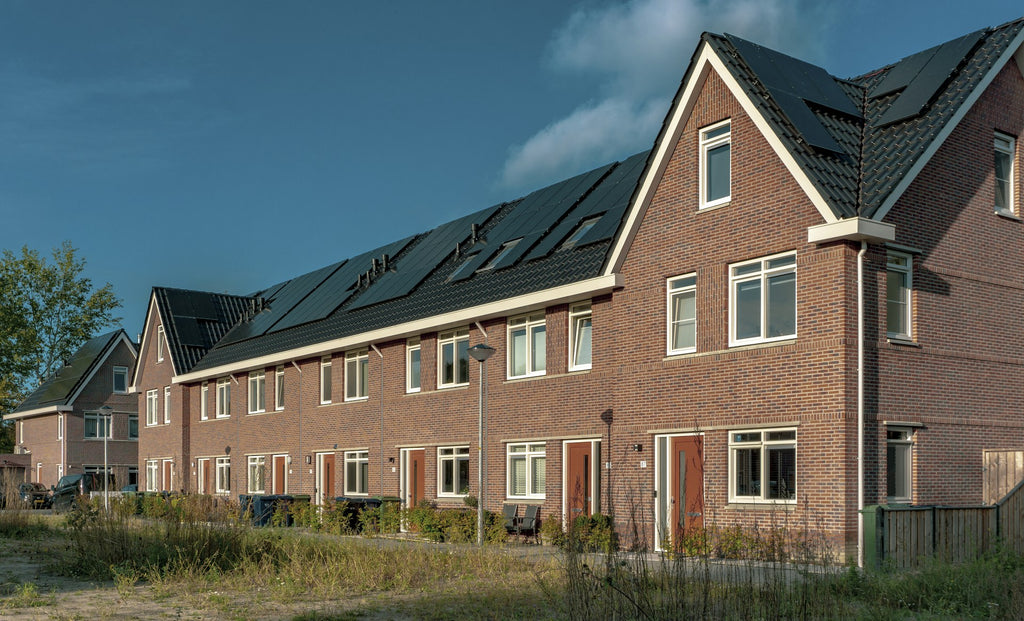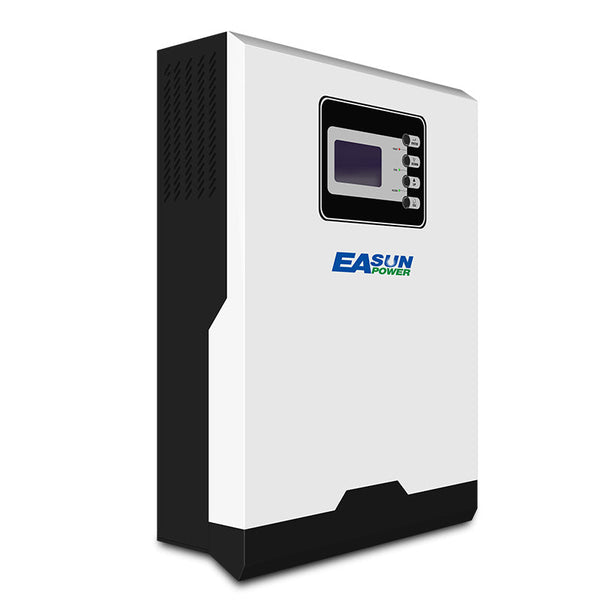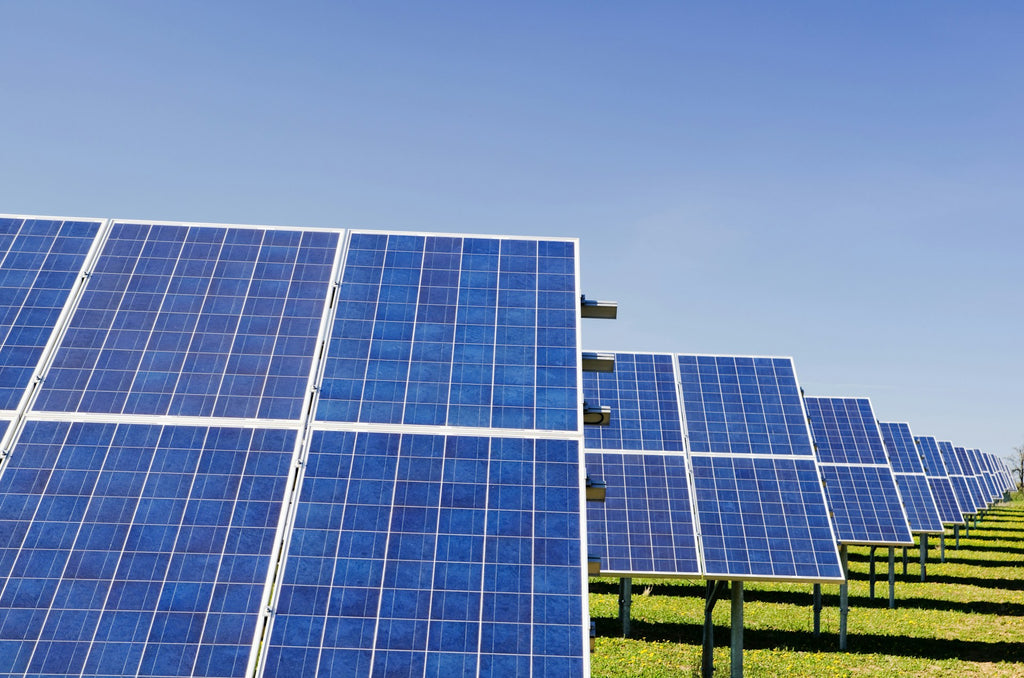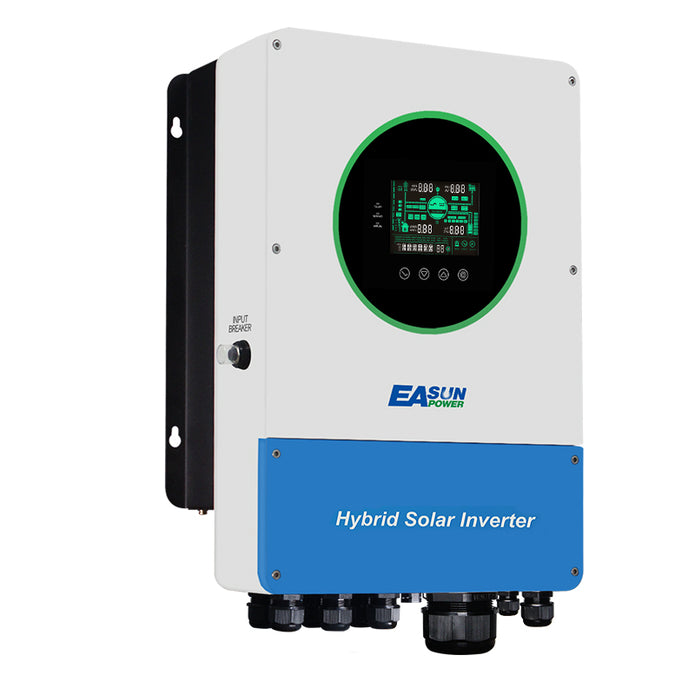
Solar Inverter: Everything You Need to Know
Solar energy, a clean and renewable power source, is increasingly becoming a crucial part of our energy mix, especially in European countries. Central to the solar energy system is the solar inverter, a device that plays a pivotal role in making solar power usable for everyday applications. This comprehensive guide explores everything you need to know about solar inverters; read on to find an exciting solar world.

What Is a Solar Inverter?
A solar inverter, also known as a power conditioning unit (PCU), is an electrical device that converts the direct current (DC) electricity generated by solar photovoltaic (PV) systems into usable alternating current (AC) electricity. The DC output from solar panels is not compatible with European electrical grids and appliances which operate on AC power. By converting DC into AC, solar inverters allow homeowners and businesses to leverage solar power directly for their electricity needs.
How Does a Solar Inverter Work?
Solar inverters utilize advanced digital signal processing and power electronics to transform current. First, the direct DC output from solar panels enters the inverter, usually at variable voltages. An MPPT (maximum power point tracking) algorithm in the inverter software continuously samples incoming voltage and current to determine the optimal operating point for the panels. This allows the greatest possible power harvest from the solar array across changing conditions during the day.
Next, the DC power passes through advanced circuitry using components like transistors and capacitors. This converts it into AC electricity at the required voltage and frequency levels, such as 240V AC at 50 Hz in Europe. Specialized algorithms help match phase angles for synchronization with the electricity grid. Some advanced inverters also filter out harmonics and ensure the output waveform has cleanly separated sine waves.
The resulting AC power from the solar inverter flows into the building's electrical system and appliances or feeds into the grid as required. When solar production falls, such as at night, the grid seamlessly supplies additional electricity demand via the inverter.

What are the Benefits of Solar Inverters?
Solar inverters occupy an irreplaceably vital position in photovoltaic energy systems. Their highly specialized functionality unlocks the tremendous potential of solar power and makes its widespread adoption truly feasible. Solar inverters unlock a multitude of crucial advantages:
1. Essential Energy Conversion
First and foremost, inverters enable the generated direct current from solar panels to undergo a critical conversion into usable alternating current power compatible with electrical grids and everyday devices. Essentially, they allow households and businesses to actually utilize renewable solar energy for their electricity needs - making them an indispensably fundamental component.
2. Extracting Greater Efficiency from Solar Arrays
Advanced maximum power point tracking (MPPT) algorithms within solar inverters optimize the energy yield harvested from connected solar panel arrays throughout changing conditions during sunlight and cloud cover. This facilitates up to 30% greater efficiency versus direct connection to batteries, enhancing the self-consumption capabilities of the PV system.
3. Reliably Delivering Solar Power for Decades
Properly installed high-end solar inverters leveraging robust components reliably maintain stable power output for 15 to 25 years or longer with minimal maintenance. Premium safety features prevent issues like islanding and anti-islanding ensures grid stability. This exceptional operational lifespan maximizes the return on investment from the solar energy asset.
4. Intelligently Integrating Solar Power
Sophisticated solar inverters additionally provide smart functionality for connecting batteries, electric vehicles, automation with smart sensors for lights and appliances, remote performance insights, and more. This enables homes and businesses to integrate solar power with high visibility and customize system behavior for optimized self-consumption or grid interactions.
5. Facilitating Environmental Sustainability
Widespread adoption of solar power facilitated by capable inverters accelerates the critical transition away from greenhouse-gas emitting fossil fuel electricity towards a more environmentally harmonious and sustainable energy infrastructure relying on renewable sunlight.

6. Lower Electricity Bills
Finally, by enabling better utilization of emissions-free solar energy, inverters provide tremendous economic value to adopters. Solar-savvy homes and commercial sites can maximize consumption of solar power for their own needs and minimize expensive grid purchases, saving substantially on electricity bills throughout the system's 25+ year lifespan.
In essence, capable solar inverters unlock a multitude of technology, sustainability, and financial benefits that make solar PV systems attractive investments. They are the behind-the-scenes workhorses driving society's critical renewable energy transition.
What are the Different Kinds of Solar Inverters?
There are 4 solar inverters available in the market, each with its own strengths and applications.
1. String Inverters
String inverters are the most ubiquitous variety, designed to handle outputs from multiple solar panels wired in series as strings while delivering value. By combining numerous strings in parallel, residential systems reaching tens of kilowatts can leverage string inverters. They balance solid performance with cost-effectiveness for typical households and small commercial sites. However, shading or damage affecting one panel impacts others on that string.
2. Microinverters
True to their name, microinverters are compact inverter units mounted right at each solar panel instead of centralized units. This architecture extracts the maximum possible power from every panel and allows users to monitor the performance of each one independently via software. With no single point of failure, microinverters keep delivering stable power despite issues with any one panel. They provide ultimate design flexibility, albeit at a higher upfront cost that pays off over decades of resilient operation.
3. Hybrid Inverters
Hybrid inverters integrate sophisticated proprietary algorithms combining solar power input with battery storage connectivity. This equips homes and businesses to sustain themselves reliably during grid outages while still leveraging the grid's stability at other times. Hybrid units also shine with smart features like app control, automation based on sensors, and advanced analytics - helping users maximize solar self-sufficiency.

4. Central Inverters
At the large-scale end of solar operations, heavy-duty central inverters excel in efficiently converting thousands of kilowatts from massive commercial solar farms and feeding them into the grid. Minimal operational overhead makes central inverters ideal for large threaded string installations spanning acres. Advanced functionality also enables remote monitoring and diagnostics for streamlined solar farm maintenance. The high capacity makes them unsuitable for residential usage despite their sophisticated capabilities.
How Much Does a Solar Inverter Cost?
Entry-level string inverters for modest residential setups can cost around €200-€300. High-capacity central inverters for industrial installations cost upwards of €3,000+.
Here is an overview of average price ranges of solar inverters:
- String Inverters: €50 - €200
- Microinverters: €200 - €500 per panel
- Hybrid Inverters: €500 - €1,000
- Central Inverters: €1,000 - €3,000+
While microinverters and hybrid units cost more upfront, the investment pays off over the long lifespan of a solar system through increased efficiency, detailed monitoring, and off-grid power assurance. Governments and utilities also offer rebates and incentives that help offset solar equipment costs.
Is a Solar Inverter Easily Installed?
Yes, installing a solar inverter can be a relatively simple process, especially with certain brands, such as EASUN POWER, that design their systems for ease of installation. These brands often integrate various components into a single unit, simplifying the setup. For individuals in Europe with basic DIY skills, this means that installing an inverter can be quite manageable. However, it is generally recommended to have solar inverters installed by a professional because professional installers not only ensure compliance with these regulations but also guarantee that the installation is optimized for safety and performance.
How to Choose the Right Size of a Solar Inverter for Home?
Choosing the properly sized solar inverter ensures the system can deliver optimal power generation throughout the year. Here are the main steps for right-sizing home solar inverter capacity:
- Calculate total solar array wattage by summing panel capacities - for example, 16 panels x 300W = 4,800W or 4.8kW
- Factor in a 20% safety buffer for seasonal and temperature variations. For the 4.8kW array above, add 0.2 x 4,800 = 960W extra.
- Convert wattage to kilowatt-hours (kWh) generated per day using 4-5 peak sun hours for Europe. Here, (4.8 kW + 0.96 kW extra) x 4.5 hrs = 24 kWh.
- Maximum continuous power should equal this figure – aim for an inverter capacity of around 24 kW or slightly greater. This accounts for all real-world operating conditions.
- Also, ensure the inverter has appropriately sized AC breakers and wiring suited to deliver the system's peak power generation. Electrical infrastructure should be able to handle maximum currents safely.
Properly sizing solar system components keeps the inverter operating at its highest efficiency point while delivering the full rated capacity through sunny and cloudy days alike.
What Size Solar Inverter Do I Need for My Home?
|
System Size |
Solar Array Size |
Inverter Capacity |
Recommended Inverter Type |
Additional Information |
|
Small Systems |
2-6kW |
2-8kW |
Single-phase string inverter |
Suitable for 6-20 standard 300W solar panels. Cost-effective solution. |
|
Medium Systems |
6-12kW |
10-15kW |
3-phase string inverter |
Ideal for 20-40 solar panels. Balances household electrical loads across phases. |
|
Large Systems |
12-20kW |
10-30kW |
Smart hybrid inverter |
Needed for larger luxury homes. Integrates battery storage, captures full solar yield. |
|
Very Large Systems |
20+kW |
Depends on specific requirements |
Central/Cluster inverters or Microinverters |
Best for systems with 50+ panels or heavily shaded large roofs. Guided by home energy consultants or solar installers. |
- Small Systems (2-6 kW)
For a typical small home solar array between 2-6 kW, a single-phase string inverter in the range of 2-8 kW is generally appropriate. This covers arrays made up of 6-20 standard 300W solar panels. String inverters in this range provide a cost-effective inverter solution.
- Medium Systems (6-12 kW)
Most medium-sized household solar installations fall between 6-12 kW, consisting of about 20-40 solar panels. For these systems, 10-15 kW 3-phase string inverters are recommended. Choosing a 3-phase inverter helps evenly balance household electrical loads across phases.
- Large Systems (12-20 kW)
On larger luxury homes, solar arrays typically span between 12-20 kW depending on available roof space. These systems often require smart hybrid inverters in the 10-30 kW capacity range to fully capture and utilize the solar yield while also intelligently integrating battery storage.
- Very Large Systems (20+ kW)
For very large home systems exceeding 20kW and necessitating 50+ panels, central or cluster inverters are more suitable than string inverters. Clustered microinverter architecture also works for large, heavily shaded roofs. The ideal system is recommended by qualified home energy consultants or solar installers.
When installing a solar PV system, it is important to match the solar inverter capacity to the size of the panels being installed to ensure optimal efficiency.
The Bottom Line
Solar inverters form a crucial bridge between solar panels and the general electrical infrastructure, enabling homeowners and businesses to utilize clean, renewable energy from the sun. Their specialized functionality makes the adoption of photovoltaic systems practical across Europe. With solar power integral to meeting carbon emission reduction goals, quality solar inverters facilitate this sustainable transition via efficient and reliable operation.

Leave a comment